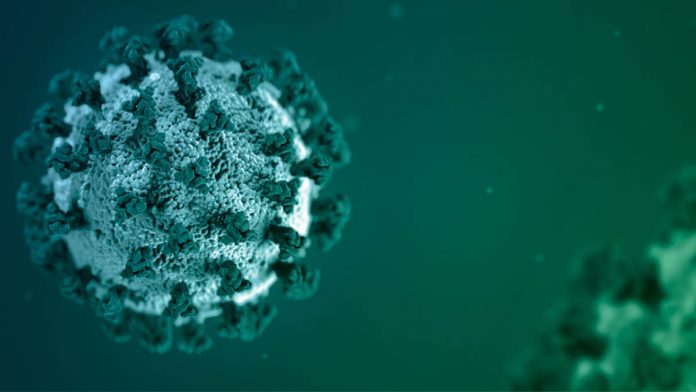This article is written by Yash Kapadia. Through this article, we ascertain what an endemic means and what are the chances of COVID-19 turning into an endemic from a pandemic, keeping in mind our current situation in India.
Table of Contents
Introduction
In the words of the United States Centers for Disease Control and Prevention (CDC), an endemic is “the constant presence and/or usual prevalence of a disease or infectious agent in a population within a geographic area.”
Explaining this term in a much simpler version for our readers, endemic means that a particular disease is there along with the population of a country but nobody is very much concerned about the disease, however, it is there. The disease is affecting a very small proportion of the society in a particular geographical area, neither growing nor shrinking at a fast pace. It is just present, living along with you. At any point in time, you may or may not get the disease. For example, every year we get some amount of diarrhoeal disease in Kerala. This generally happens with every pandemic. Before it ceases to exist, there will be a sustained period of endemicity which means your system and your health system will not be stretched by the disease as it did when it was a pandemic.
How pandemics end up being endemic and rarely leave
Every disease pathogen that affects people like those we have known about over the last several decades has stayed in some form or other as it is impossible to fully eradicate them. Pathogens like malaria that are as old as memory can take us is yet considered to be a heavy disease burden and so are epidemics like tuberculosis, measles, leprosy, and younger pathogens like Ebola virus, SARS, and of course the recent entrant SARS-CoV-2.
Even plagues used to return every decade and each time hit the most-prone societies and took a toll for at least six centuries. In fact, it is pertinent to note that the only disease that has been eradicated through vaccination is smallpox. Mass vaccination campaigns led by the World Health Organization in the 1960s and 1970s were successful, and in 1980, smallpox was declared the first – and still, the only – human disease to be fully eradicated.
It is to be remembered that whether bacterial, viral or parasitic, virtually every disease pathogen that has affected people over the last several thousand years is still with us because it is nearly impossible to fully eradicate them.
Let us take an example, say pathogens like malaria. It is transmitted via parasites and it’s almost as old as humanity and still, so many people are affected by it even today. To be very precise, there were about 228 million malaria cases and 4,05,000 deaths worldwide in 2018 due to malaria alone. Since 1955, global programs to eradicate malaria, assisted by the use of DDT and chloroquine, brought some success, but the disease is still endemic in many countries of the Global South.
Similarly, diseases such as leprosy, tuberculosis and measles have been around affecting many people for several years now. Immediate eradication of these pathogens is yet not possible if spoken about realistically. Therefore, it can be held conclusive that these pandemics have become endemics. They are living with us i.e. co-existing with us.
Also, today when all of us are living in an age of global air travel, climate changes and experiencing ecological imbalances like never before, we are constantly being exposed to the threat of emerging infectious diseases which we have no clue are breeding somewhere while we co-exist with some diseases and some like COVID-19 that concern us.
Therefore, the history of various diseases has proven that it is easier for a pandemic or an epidemic to become endemic and co-exist with humans rather than getting completely eradicated.
The current situation in India
At present, India has been experiencing between 20,000 and 35,000 new cases of COVID-19 pandemic every day which is significantly down from a daily of 4,00,000 cases only before 3 months in April and May 2021.1 The fresh cases have now fluctuated around this range with a majority of these spread across from the southern state of Kerala.
India on 1st September 2021, administered over 1.25 crore vaccine doses, taking the cumulative doses administered in the country to over 65 crores. The vaccination drive and its pace is a worldwide example as India initially took 85 days to vaccinate 10 crore people. It then took 45 days to cross the 20 crore vaccinations mark and 29 more days to reach 30 crores. India then took 24 days to reach 40 crores and 20 more to cross 50 crore vaccinations on August 6, 2021. Furthermore, India took 19 more days to vaccinate a total of 60-crore citizens on August 25, 2021.2
On August 27, 2021, too, India administered over one crore vaccine doses in one day which is a number no other country could secure to date3. As a comparison, this feat is equivalent to vaccinating the entire population of New Zealand twice. However, all that is anticipated in the third wave of this COVID-19 pandemic. When will it come? Will it ever come? What if this pandemic turns into an endemic?
Concerning issues of this pandemic
One of the major concerning issues of COVID-19 is its adaptability to transform into newer mutations which are creating disruptions across the globe. For example, the Delta variant. For a pandemic to transform into an endemic the disruptions it has been causing must subside significantly. However, with the Delta variant, it is again causing trouble in the countries of the US, UK, New Zealand which forced the governments to again impose COVID-19 related restrictions.4
As we speak of concerning issues, we must only consider such mutations to be major tides that we must pass for COVID-19 to turn into an endemic.
Also, the BMC of Mumbai stated that COVID-19 will be considered as a pandemic only until 80% of Mumbai’s population is double vaccinated. Even then we are still hearing of Covid positive cases of people who are double vaccinated.
Lastly, the third wave speculations5 are doing the rounds for a few months and people are therefore urged to keep wearing masks and abide by the protocols released by the local governments.
The positive aspect here is that if the death toll is not rising and people are getting accustomed to having a certain rate covid positive patients who are also cured, later on, it is a call that this might turn into an endemic with people also acquiring herd immunity.
What will happen if COVID-19 becomes an endemic
It is said that COVID-19’s exit from the pandemic and entry into an endemic stage means that it will be present in some form or the other. It will become like influenza or malaria i.e. it will be present amongst us but people would not worry about it as much as they do now. An endemic is in fact desirable and is definitely better than a pandemic. It allows us to co-exist with the virus. An Indian doctor states that “Co-existence is another manifestation of endemicity”
Certain doctors put forth their views in order to explain the consequences of what COVID-19 would be if it reaches an endemic stage.
If attention is drawn towards endemic diseases that are present all over the world, we learn that a major proportion of endemic diseases are contributed by only two families of viruses and they are influenza virus and coronavirus. Both are in fact originated from animals. Taking the example of Seasonal flu, it may affect the population to a certain degree and may further cause some kind of complications and a certain amount of the population may get affected. However, a significant number of people would be affected by a very mild disease but if the vulnerable age group i.e. the people with comorbidities or lower immune systems and the elderly age group, are affected then the scenario may get ugly. Therefore, to avoid such scenarios, nations try to protect the population by giving vaccines against seasonal flu. With new strains of flu viruses being discovered to the human population, vaccines will too be modified by incorporating the new flu viruses. There is a high chance that this can be similar to what COVID-19 may have in store for us. Even now, among the viruses which are causing flu-like symptoms among human beings, almost 30 percent of the viruses are in the group of coronaviruses.
Way back in March 2021, the Health Minister in Delhi stated that the COVID-19 pandemic may be nearing the endemic phase. Only a month before when Delhi faced the second wave and was in turmoil due to the shortage of oxygen supply for COVID-19 affected patients, their Health Minister was of the opinion that the pandemic phase was perhaps over in Delhi and that the state was moving towards the endemic phase. He stated this based on the fact that Delhi had a swine flu outbreak 10 years ago but even today some cases are reported on a yearly basis. All the more, he opined that COVID-19 was not going to end completely but Indians would have to learn to live with it by wearing masks diligently to avoid the spread as not wearing it gave Indians the biggest learning for the 2020 year.
If COVID-19 transforms itself into an endemic then we can say for sure that the cases will never reach the number zero. In simpler words, we would never be able to eradicate COVID-19 but we would definitely be able to live with it. It is to be made very clear that a pandemic has the ability to cause more havoc to an entire nation and the countries across the globe than an endemic can ever have. With the size and population spread across India, it is a favourable situation wherein this pandemic can enter its endemic phase.
However, before we convince ourselves that COVID-19 will become an endemic we need to consider the mutations it has the serious effects they are having on different nations. For example, the Delta variant created havoc in the United States and Britain due to which certain states again had to impose lockdown restrictions to control the spread of this mutant.
A PTI report said that even government hospitals’ doctors have firmly opined that although zero cases is an unlikely figure as the virus keeps mutating, they expect that there will be a steady decline in cases in the coming days.
Conclusion
In drawing things to a close, we are at a crucial juncture that shall determine whether the COVID-19 pandemic will turn out to be an endemic for us or not. However, it will take around 12-14 months as predicted by an expert. Nonetheless, if COVID-19 does become an endemic it is a favourable outcome for the citizens of India as in due course COVID-19 cases will stop being a statistic that is daily being monitored.
However, robust vaccination drives must be continued regardless of any situation, be it a third wave or the rise of another mutant virus or even COVID-19 turning into an endemic. After most of the population is vaccinated it is only a matter of time that we start seeing better days and stop referring to the COVID-19 pandemic forever.
References
- https://www.worldometers.info/coronavirus/country/india/
- https://www.livemint.com/news/india/india-administers-1-crore-covid-19-vaccines-in-a-day-for-fourth-time-11631868917205.html
- https://www.thehindu.com/news/national/india-administers-more-than-one-crore-covid-19-vaccination-doses-in-single-day-on-august-27-2021/article36144626.ece
- https://www.nature.com/articles/d41586-021-01696-3
- https://www.thenewsminute.com/article/here-s-what-india-s-third-wave-covid-19-could-look-154143
LawSikho has created a telegram group for exchanging legal knowledge, referrals, and various opportunities. You can click on this link and join:
https://t.me/joinchat/J_0YrBa4IBSHdpuTfQO_sA
Follow us on Instagram and subscribe to our YouTube channel for more amazing legal content.
 Serato DJ Crack 2025Serato DJ PRO Crack
Serato DJ Crack 2025Serato DJ PRO Crack











 Allow notifications
Allow notifications



